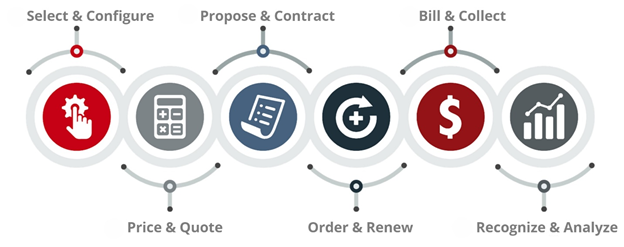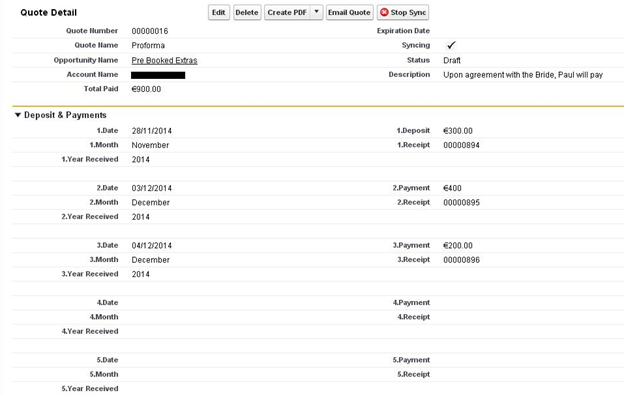Are you manually reviewing your quotes?
If your answer is yes, and you still have a person in your company dedicated to manually reviewing and approving quotes, then you are losing a lot of valuable time and even affect the employee’s motivation and productivity.
And what about your sales process? The entire sales team loses significant time manually reviewing quotes, they are getting frustrated and they lose the possibility to focus on the selling process.
How can you change this reality and make your sales process efficient and better? Salesforce and its Quote to Cash (QTC) come to aid here. In the following lines, you can read how you can leverage Quote to Cash to empower your sales team.
The Quote to Cash solution can be seen as a single platform where your customer’s information can be gathered, tracked, prepared, and updated as needed. It is a process that includes activity from the sales teams – they send details to the customer for the products that they are offering along with the price.
Once this phase is done, the information is entered into an official document – Quote, and then it continues to Cash – which is Invoice, negotiation, and payment.

Quote-to-Cash is one of the most important business processes, as it is crucial for driving revenue to your business and outlining a clear view of all your sales and contracts with customers.
Salesforce Quote-to-Cash connects Salesforce CPQ, Billing, and Salesforce Lightning into a single, CRM platform. This is a very useful process for the clients, which is simple to use, automates invoices and quotes, displays terms, and allows terms modification. In addition, it provides clients with the ability to create a report and visually represent the data through dashboards.
Salesforce Quote-to-Cash includes mobile design, so no matter whether you are using your personal computer or mobile, you will have full access to the tools that are needed for the sales procedure of the quote-to-cash process.
Quote-to-Cash is the sale itself – from the beginning (starting with the offers or quotes) up to the end (payment or cash). More specifically, Quote-to-Cash contains Configure Price Quote (CPQ), and basically includes the following steps:

Configure:
Configuration is a very important step in the sales process. Whenever we sell something, we should configure it to meet the customer’s needs.
This step helps the sales team to improve the product search process by narrowing the list based on the client’s needs. When you present products to your customers, they should be tailored to your customers as individuals.
Price:
Very often different customers have different requirements even if the case is for the same product. Therefore, price plays a big role in the sales process. It is very important to define the price according to the customer’s needs.
Not many organizations sell their products at a full rundown cost to all customers in all circumstances. Pricing can be simple for one product that is not multiplied, and it can be complex if the pricing contains discounts, rules, bundle pricing, or multiple price books.
The Business world is ever-changing, so sales teams should adapt to the new changes in the price of the products.
Quote:
Once the configuration and the price are defined for the product, the last step is to document everything. The documentation is to show a quote or proposal before finalizing a deal.
The quote is where everything is tied together with a formatted presentation of the products your customer wants to buy, prices (with/without discounts), terms, and conditions that you want to present to your customer.

After the quote is created, it can be previewed, and exported or you can send it through an email, and even incorporate an electronic signature to finalize the negotiations.

Order Management:
When a quote is defined, the next step is the signing of the contract. It is really important to ensure that the right clients receive the right orders. That progression includes organizing invoices, monitoring stocks, and ensuring that the transportation is handled timely and professionally.
Invoicing:
After finalizing the sales process, all charges are represented and a bill is sent to the customer. The invoice should include the price, any discounts to the price, and other special deals, and should be made and sent within a pre-established timeframe.
Payment Receipt:
Once clients pay for the products, the inflow of money should be followed and reviewed for accuracy.
Quote-to-cash solutions are created with the purpose of keeping everything on track.

Conclusion:
CPQ and QTC solutions can significantly improve your business. Creating quotes and proposals is a vital part of sales processes, so automating that process can be very helpful for managers.
Advanced CPQ and QTC processes help sales teams quickly identify the products that would be the best for their customers depending on their needs. By recognizing individual needs, you can improve your clients’ relationships, and by using CPQ and QTC processes you get easy access to product data, the ability to effectively manage, automated contracts, and improving the entire sales process.

